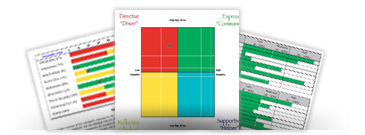Using Sales Data to Predict Future Success or Failure
Sales forecasting can be a subject of dread for both managers and salespeople. This is probably due to lack of consistency: forecasting methodologies can range from throwing darts at a board (aka “wild guesses) to performing tedious, complex data analysis using spreadsheets, databases, and more.
But what is the point of forecasting in the first place?
Really it boils down to this: to drive sales and marketing efforts for the next week, month, quarter, etc. If you don’t know where you have been, you cannot map out where you are going. And sales data provides the basis in figuring this all out.
Take a closer look
In their most simple form, forecasts compare current earnings to a previous period and see if sales are up or down. For too many businesses, the analysis stops here. And the resulting plan goes something like:
“Sales are down. Do something about it.”
Or “Sales are up. We are geniuses, so let’s party.”
The former results in panic and the latter often results in dropping the successful actions that led to the performance increase.
By segmenting markets, digging deeper into sales data and conducting in-depth analysis, such as win-loss analysis, businesses can glean insights into the reasons behind the numbers and keep things going.
In a recent Gartner report, Todd Berkowitz points out that rigorous win-loss analysis resulted in sales win rate improvements of up to 50 percent for many businesses. 50 percent!
Some other data points to look into
Here are a few data points that can help a business predict future performance.
- Sales growth rates
- Affordable growth rates
- Break even rates
- Net working capital turnover rates
Chron recently outlined how to both determine these values and how to use them to boost business performance.
Competitor sales data
In-depth sales analytics are often a closely guarded secret. However, there is an abundance of information available about competitor businesses that you might be overlooking.
From press releases to quarterly reports, analyzing your competition allows you to benchmark your own sales figures and forecasts across the market as a whole.
You might be a market leader, but if your competitors are outperforming you in the near term, there could be trouble looming on the horizon. Likewise, if competitor performance follows similar trends in periods of low sales, it might just indicate a common market trend and not point to a problem in your sales approach.
Focus
In an age where businesses generate petabytes of data, it is easy to lose sight of the goal of collecting data in the first place.
While “big data” collection is a buzzword in IT, it is important to provide sales teams and managers very simple ways to use all of this data, and not just spew report after report of complex metrics. Narrow it down to the precise data points you need to analyze and forecast performance without needing an advanced degree in mathematics to figure it all out.
Sales data offers a number of insights into your business. One of the most effective uses is for predicting future failure and success for products, services or techniques. Even basic analysis techniques can pay off big for your business.



